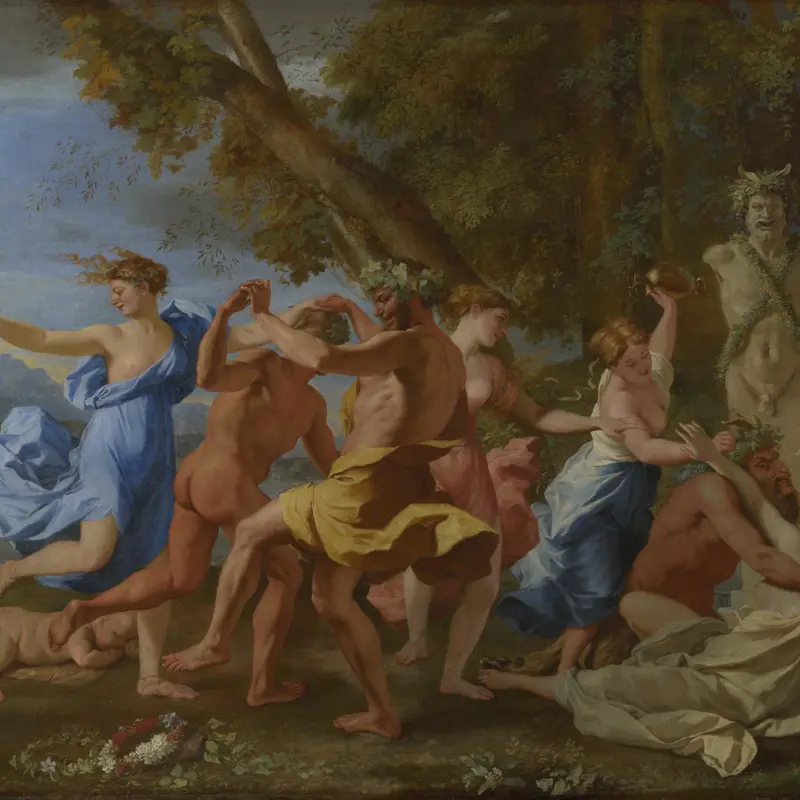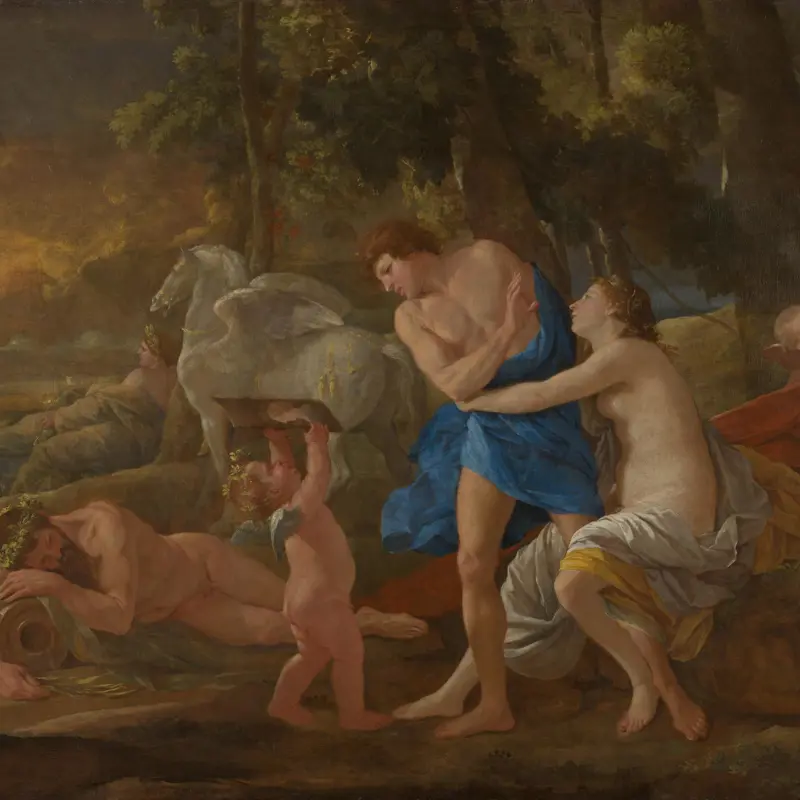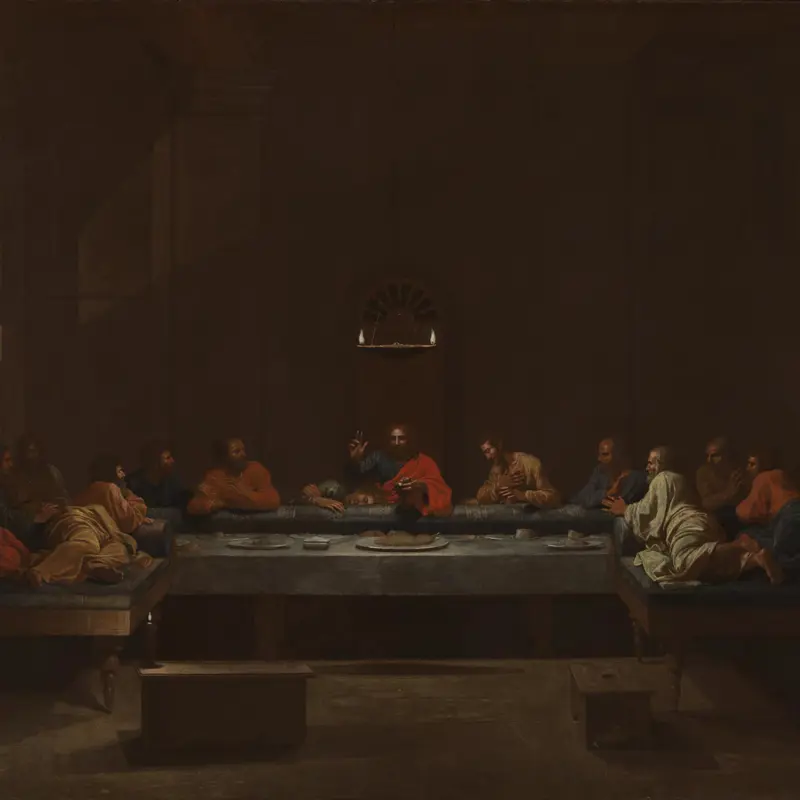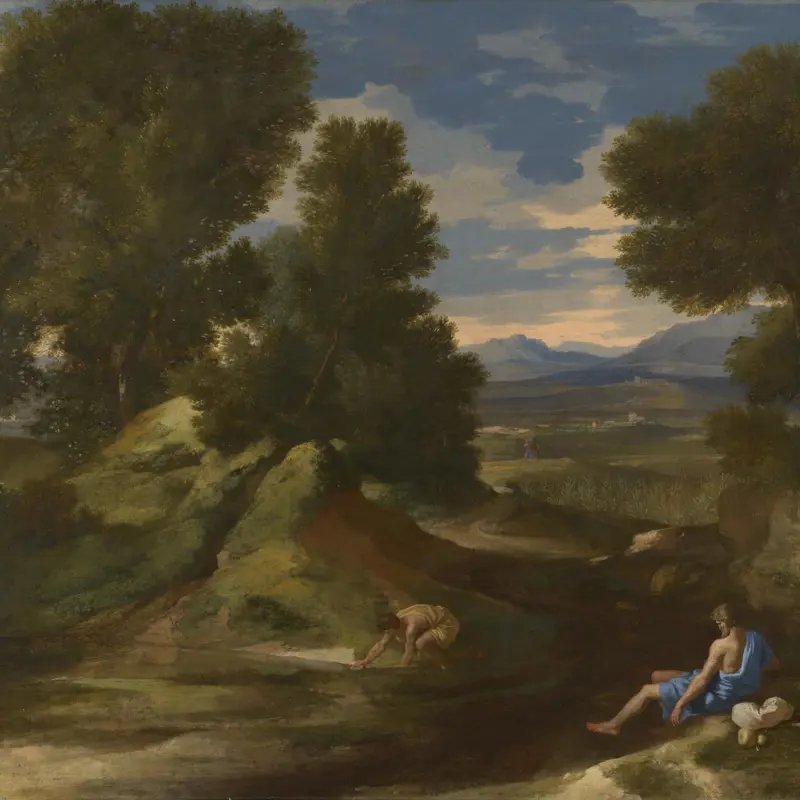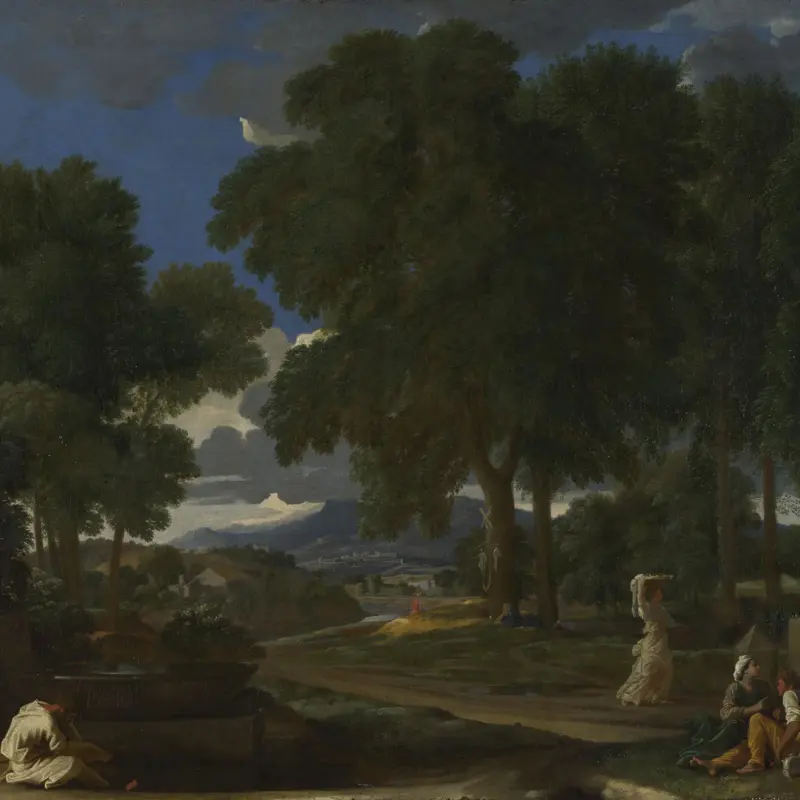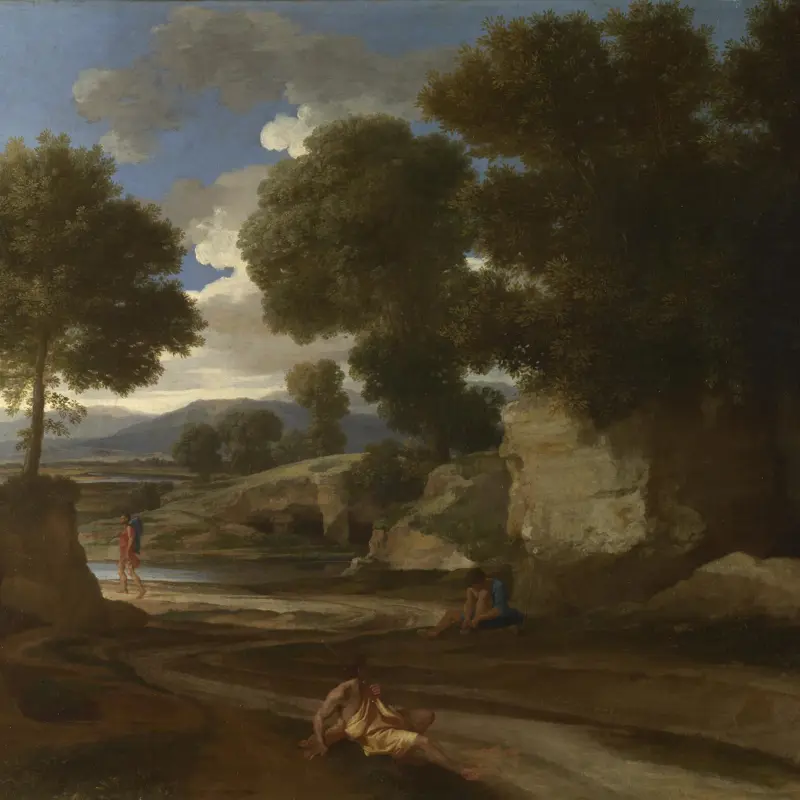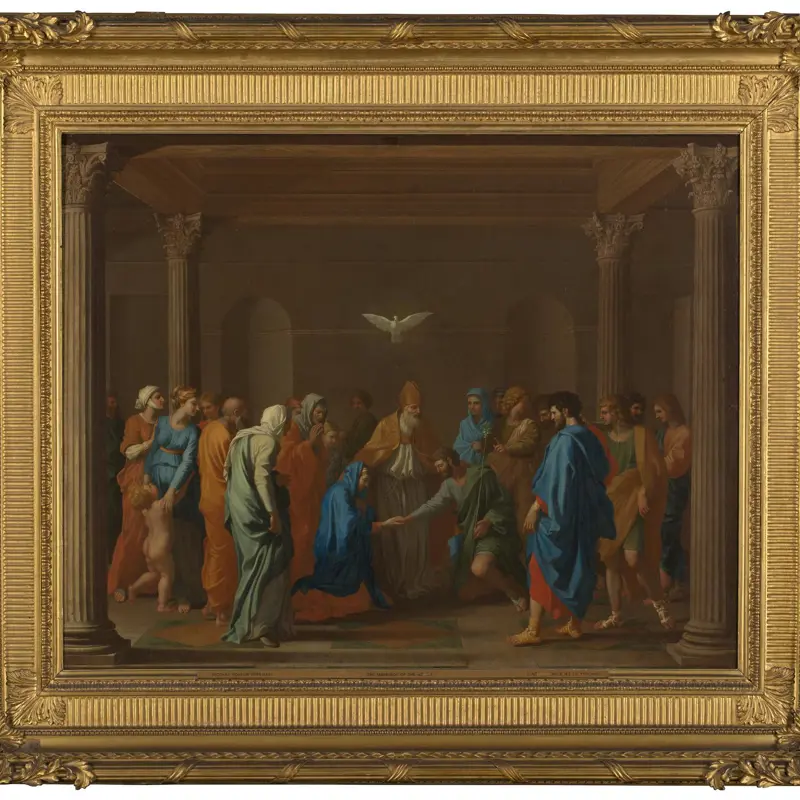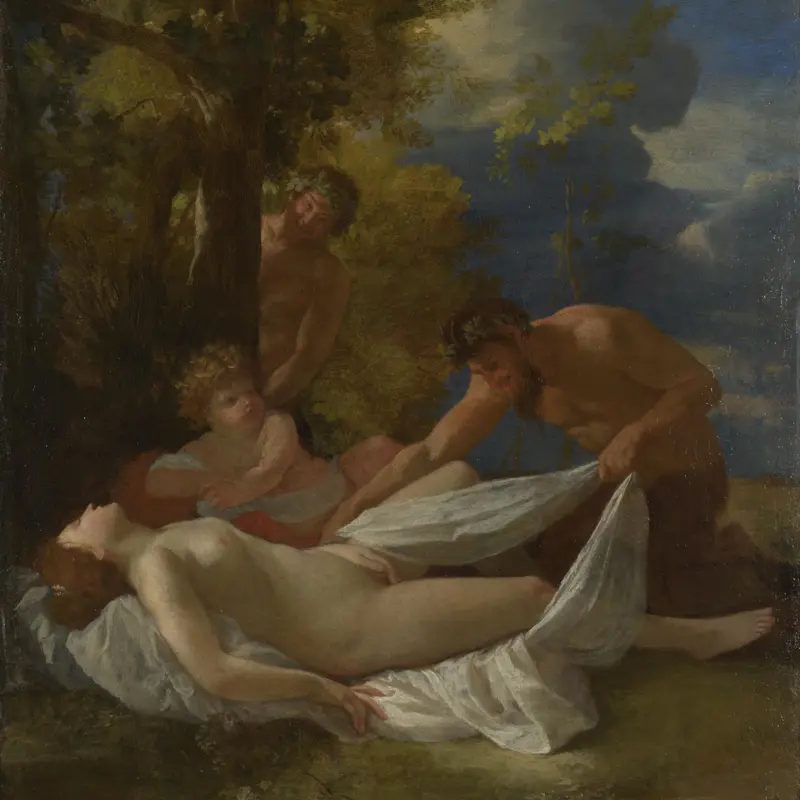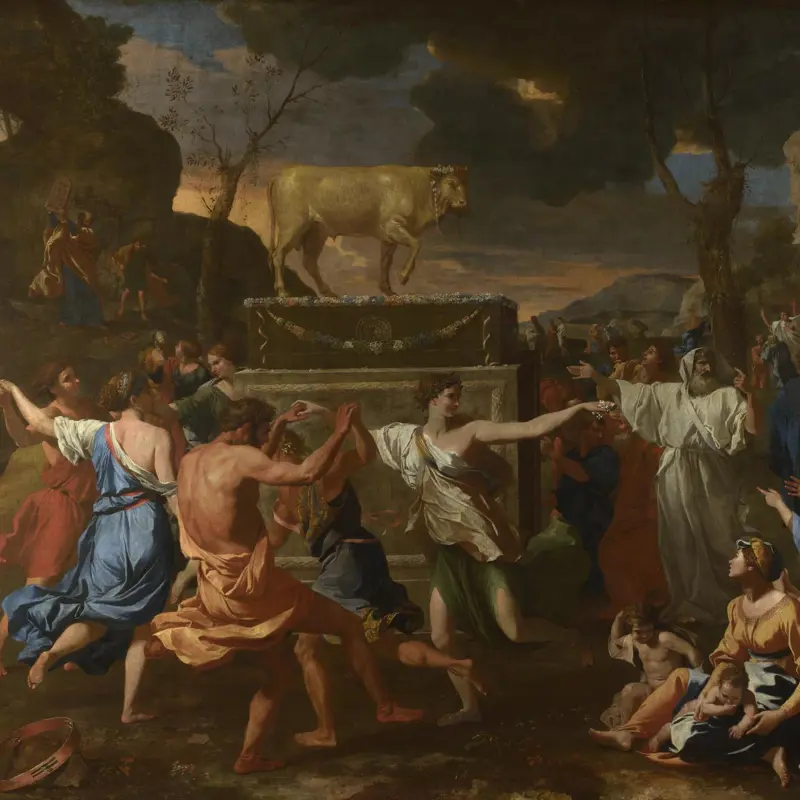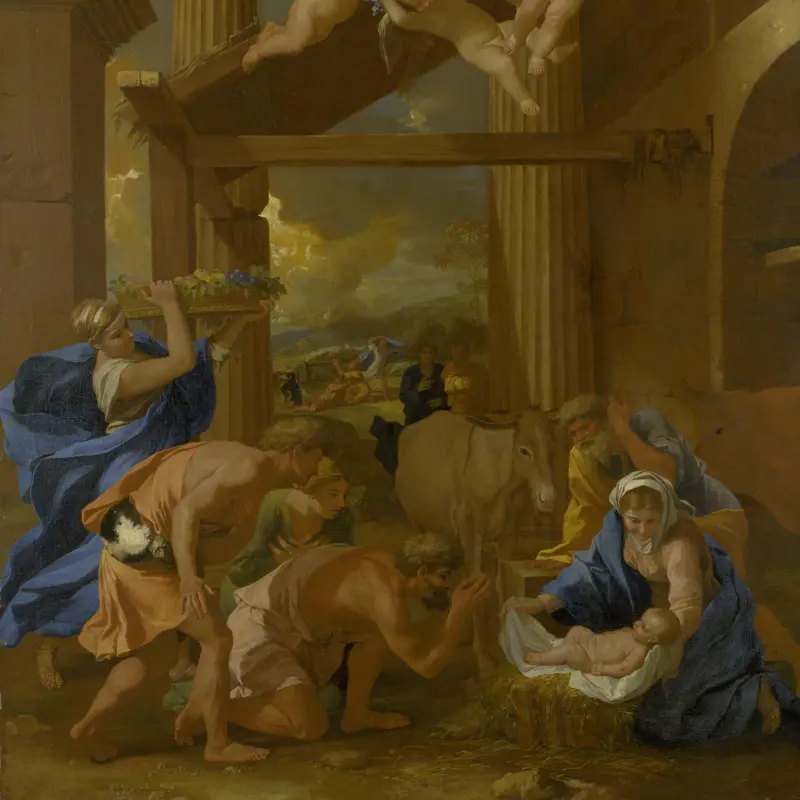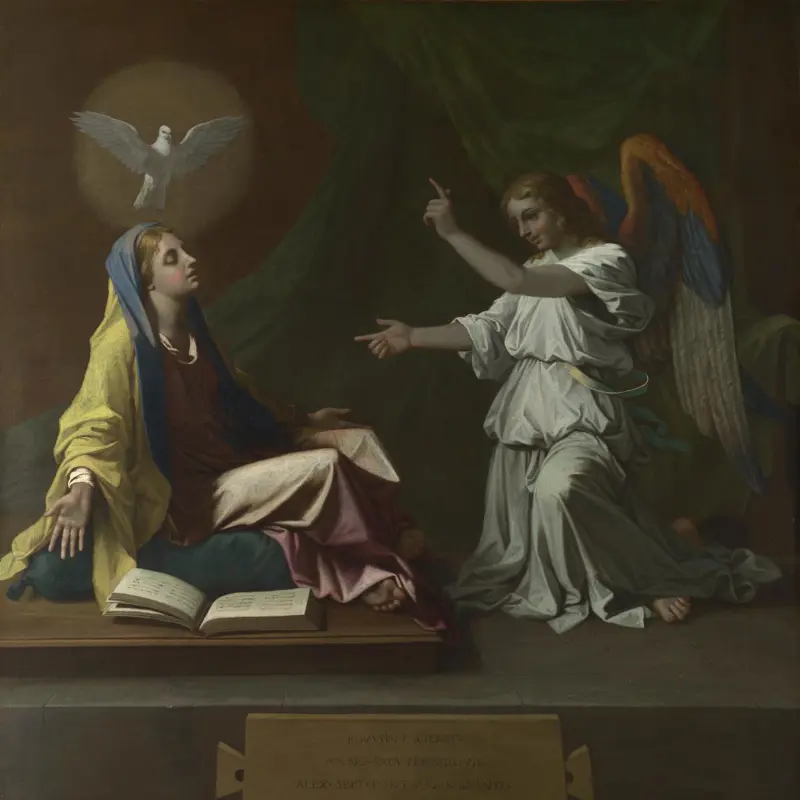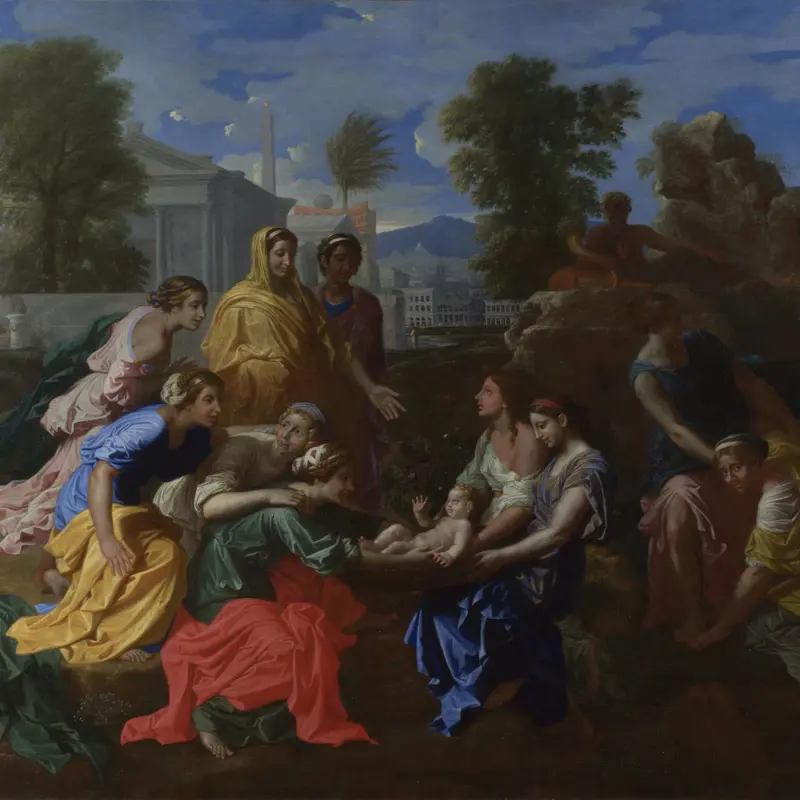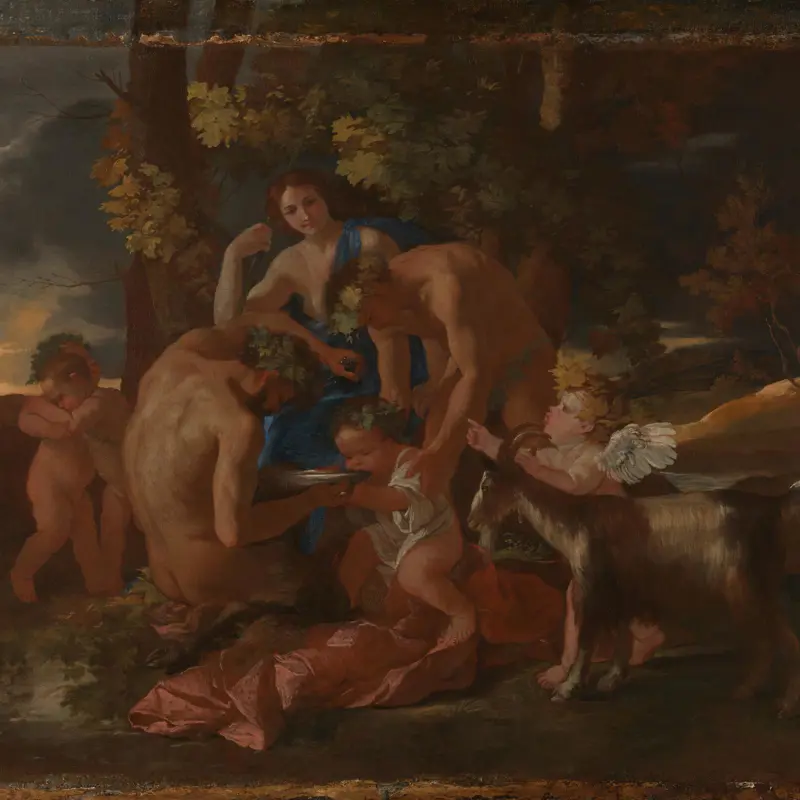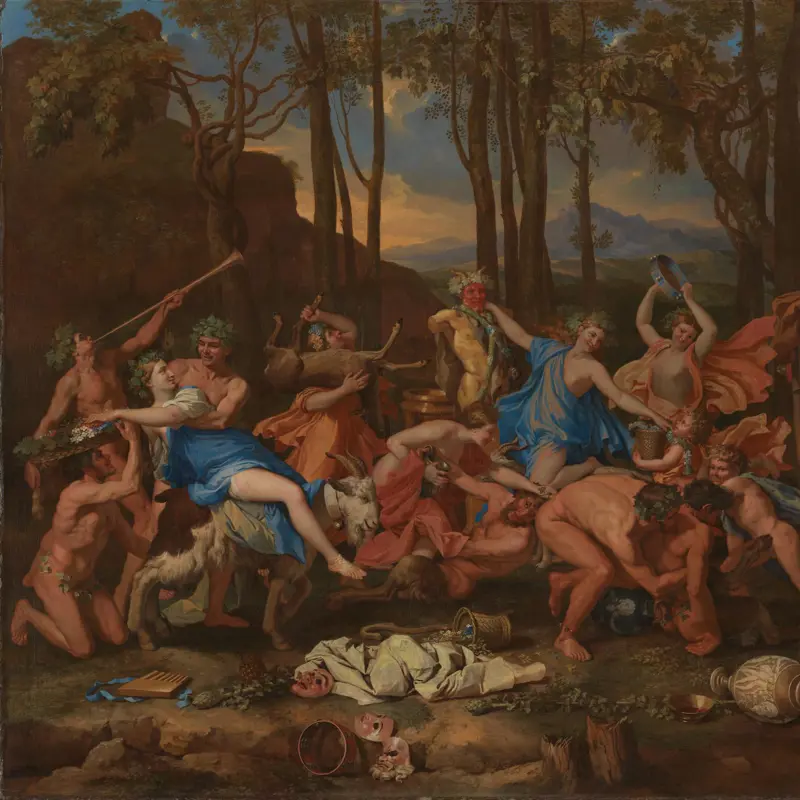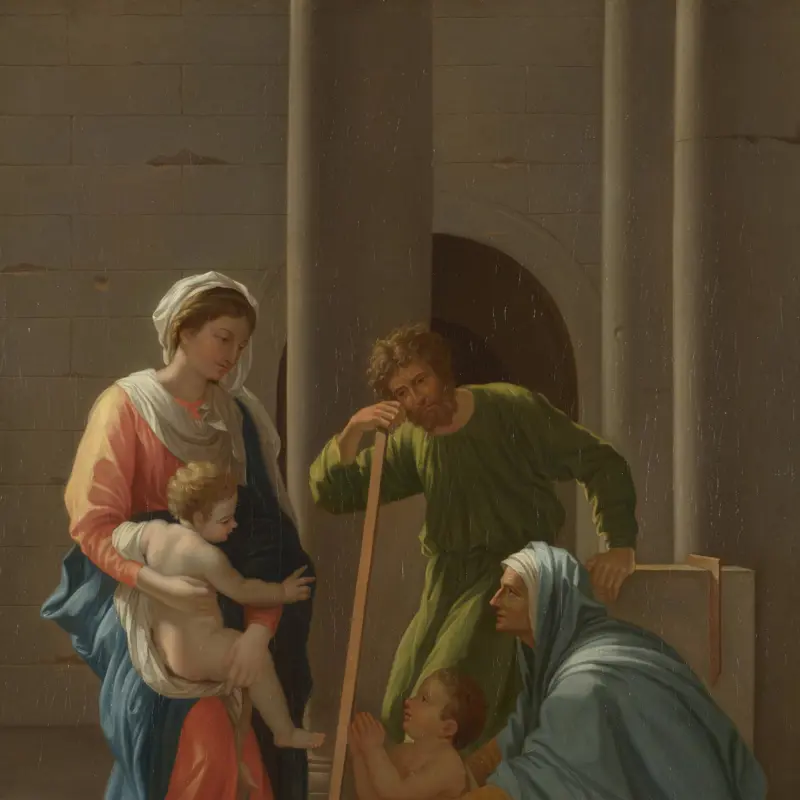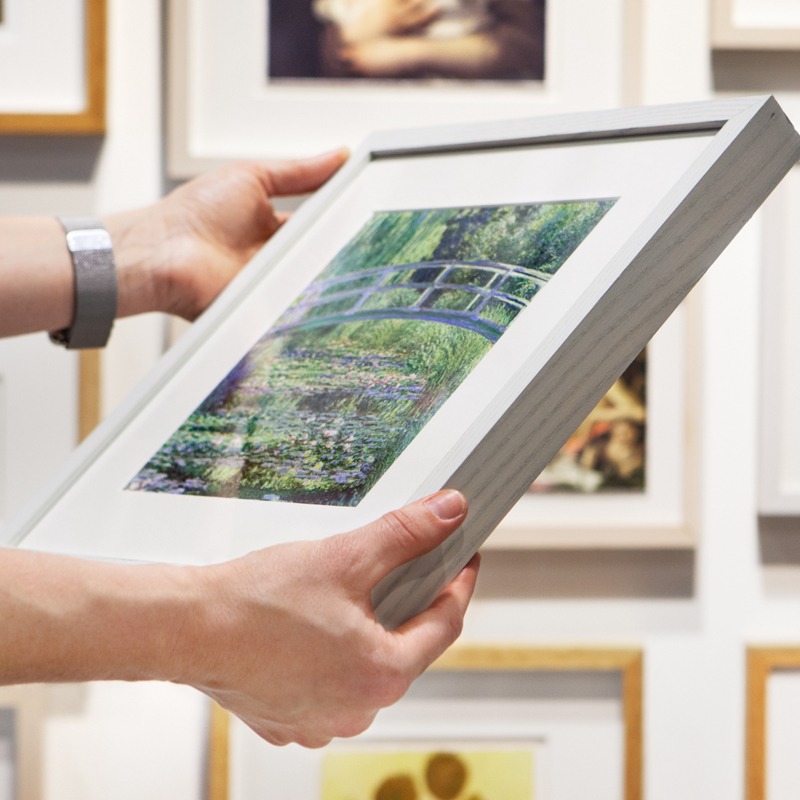Nicolas Poussin, 'The Triumph of Silenus', about 1636
About the work
Overview
This playful scene celebrates Silenus, companion to Bacchus, the Roman god of wine and drunkenness. Silenus, a naked old man with a bald head, sits slumped on a throne to the left, supported by two men. Too drunk to stand, he balances one leg precariously on a tiger. He is surrounded by revellers who remove their clothing and enjoy the festivities. The flute player stares towards us, inviting us to join the party. To the right, a shepherd seduces a female satyr, who symbolises lust. Behind them, two centaurs with human bodies and horses' legs attack an ass. The composition is complex and sophisticated, with trees and rocky cliffs framing the scene.
This was one of three bacchanalian scenes Poussin painted for the powerful French minister, Cardinal de Richelieu (1585–1642). The painting’s uneven finish, with some figures quite coarsely executed but objects in the foreground rendered meticulously, had led some scholars to consider this a copy after a lost work by Poussin. Recent conservation treatment and technical analysis point instead to this being Poussin’s original.
Key facts
Details
- Full title
- The Triumph of Silenus
- Artist
- Nicolas Poussin
- Artist dates
- 1594 - 1665
- Date made
- about 1636
- Medium and support
- oil on canvas
- Dimensions
- 142.9 × 120.5 cm
- Acquisition credit
- Bought, 1824
- Inventory number
- NG42
- Location
- Room 29
- Collection
- Main Collection
- Previous owners
- Frame
- 18th-century French Frame
Provenance
Additional information
Text extracted from the ‘Provenance’ section of the catalogue entry in Humphrey Wine, ‘National Gallery Catalogues: The Seventeenth Century French Paintings’, London 2001; for further information, see the full catalogue entry.
Exhibition history
-
2011Richelieu à RichelieuMusée des Beaux-Arts (Tours)12 March 2011 - 13 June 2011
-
2021Poussin and the DanceThe National Gallery (London)9 October 2021 - 3 January 2022J. Paul Getty Museum (Los Angeles)15 February 2022 - 8 May 2022
Bibliography
-
1829
J. Smith, A Catalogue Raisonné of the Works of the Most Eminent Dutch, Flemish, and French Painters: In Which is Included a Short Biographical Notice of the Artists, with a Copious Description of Their Principal Pictures […], 9 vols, London 1829-1842
-
1914O. Grautoff, Nicolas Poussin: Sein Werk und sein Leben, Munich 1914
-
1946Martin Davies, National Gallery Catalogues: French School, London 1946
-
1957Martin Davies, National Gallery Catalogues: French School, 2nd edn (revised), London 1957
-
1966A. Blunt, The Paintings of Nicolas Poussin: A Critical Catalogue, London 1966
-
1980D. Wild, Nicolas Poussin: Band I, Leben, Werk, Exkurse, Band II, Katalog der Werke, Zürich 1980
-
1990A. Mérot, Nicolas Poussin, London 1990
-
1994P. Rosenberg, Nicolas Poussin, 1594-1665: Catalogue raisonné des dessins, Milan 1994
-
1995H. Wine, 'Poussin Problems at the National Gallery', Apollo, 1995, pp. 25-8
-
1996O. Bonfait, Poussin et Rome: Actes du colloque à l' Académie de France à Rome et à la Bibliotheca Hertziana, 16-18 novembre 1994, Rome 1996
-
1996A. Mérot (ed.), Nicolas Poussin (1595-1665). Actes du colloque organisé au Musée du Louvre, Paris 1996
-
1996M. Clayton, 'Review of Rosenberg and Prat', The Burlington Magazine, CXXXVIII/1120, 1996, pp. 467-9
-
1998R. Delfine, Études iconographique des Bacchanales Richelieu de Nicolas Poussin, Paris 1998
-
1998H. Keazor, Poussins Parerga. Quellen, Entwicklung und Bedeutung der Kleinkompositionen in den Gemiilden Nicolas Poussins, Regensburg 1998
-
1998O. Bonfait, 'Poussin aujourd'hui', Revue de l'art, 119, 1998, pp. 62-76
-
1999E. Cropper, 'Conception and Deception: Poussin's Mirrors', Cleveland Studies in the History of Art, IV, 1999, pp. 76-95
-
2001
C. Baker and T. Henry, The National Gallery: Complete Illustrated Catalogue, London 2001
-
2001H. Wine, National Gallery Catalogues: The Seventeenth Century French Paintings, London 2001
-
2002H.T. Goldfarb et al., Richelieu: Art and Power (exh. cat. Montreal Museum of Fine Arts, 18 September 2002 - 5 January 2003; Wallraf-Richartz-Museum, 31 January - 20 April 2003), Montreal 2002
About this record
If you know more about this work or have spotted an error, please contact us. Please note that exhibition histories are listed from 2009 onwards. Bibliographies may not be complete; more comprehensive information is available in the National Gallery Library.

